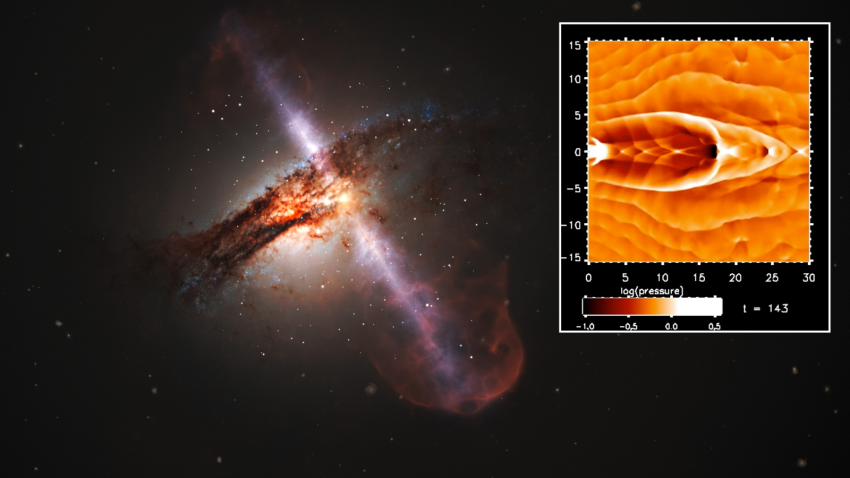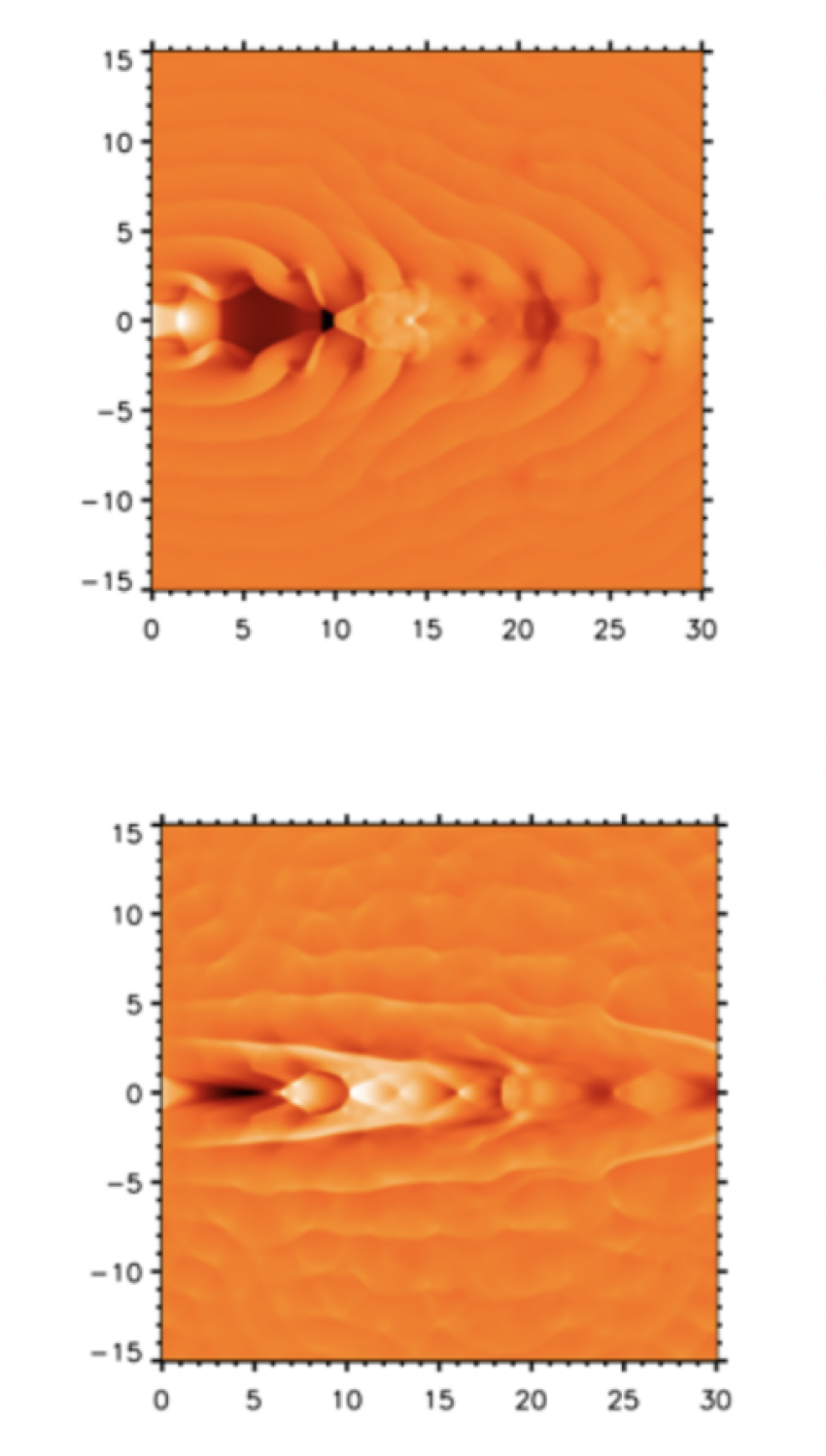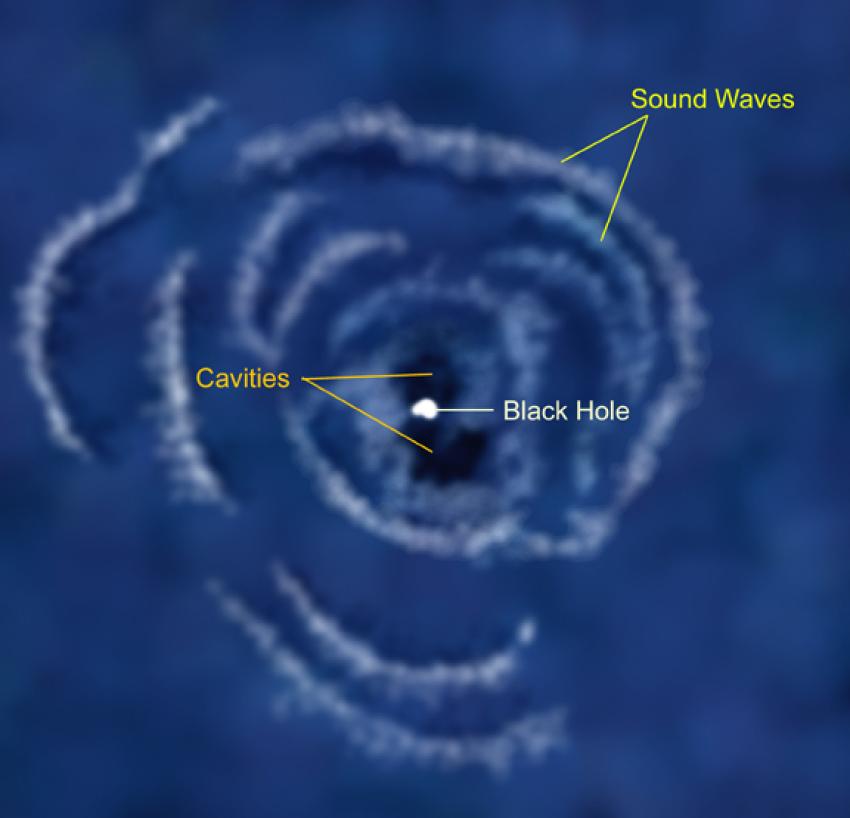Galaxies avoid an early death because they have a "heart and lungs" which effectively regulate their "breathing" and prevent them growing out of control, a new study suggests.
If they didn't, the Universe would have aged much faster than it has and all we would see today is huge "zombie" galaxies teeming with dead and dying stars.
That’s according to a new study published in the Monthly Notices of the Royal Astronomical Society, which investigates one of the great mysteries of the Universe – why galaxies are not as large as astronomers would expect.
Something appears to be stifling their enormous potential by limiting the amount of gas they absorb to convert into stars, meaning that instead of endlessly growing, something inside resists what was thought to be the inevitable pull of gravity.
Now, astrophysicists at the University of Kent think they may have uncovered the secret. They suggest that galaxies could in fact control the rate at which they grow through how they "breathe".
In their analogy, the researchers compared the supermassive black hole at the centre of a galaxy to its heart and the two bi-polar supersonic jets of gas and radiation they emit to airways feeding a pair of lungs.
Pulses from the black hole - or "heart" - can lead to jet shock fronts oscillating back and forth along both jet axes, much like the thoracic diaphragm in the human body moves up and down inside a chest cavity to inflate and deflate both lungs.
This can result in jet energy being transmitted widely into the surrounding medium, just as we breathe out warm air, resulting in slowing galaxy gas-accretion and growth.
PhD student Carl Richards came up with the theory after creating new, never-before-tried simulations to investigate the role supersonic jets might play in inhibiting galaxy growth.
These involved allowing the black hole "heart" to pulse and the jets to be at high pressure – much like a form of hypertension, if extending the comparison to the human body.
This caused the jets to "act like bellows", he said, by sending out sound waves "like ripples on a pond surface".
The phenomena is similar to the terrestrial equivalent of sound and shock waves being produced when opening a bottle of champagne, the screech of a car, rocket exhausts and the puncture of pressurised enclosures.
"We realised that there would have to be some means for the jets to support the body - the galaxy’s surrounding ambient gas - and that is what we discovered in our computer simulations," Richards said.
"The unexpected behaviour was revealed when we analysed the computer simulations of high pressure and allowed the heart to pulse.
"This sent a stream of pulses into the high-pressure jets, causing them to change shape as a result of the bellows-like action of the oscillating jet shock fronts."
These overpressured jets effectively expanded "like air-filled lungs", the researchers said.
In doing so, they transmitted sound waves into the surrounding galaxy in the form of a series of pressure ripples, which were then shown to suppress the galaxy's growth.
There is some evidence of ripples in extra-galactic media, such as those observed in the nearby Perseus galaxy cluster associated with enormous hot gas bubbles, which are believed to be examples of sound waves.
These ripples were already thought to be responsible for sustaining the ambient environment surrounding a galaxy, although a mechanism to generate them was missing.
Conventional cosmological simulations are therefore unable to account for the flows of gas into galaxies, leading to one of the great mysteries of the Universe, so it relies on the highly-active black hole at a galaxy's heart to provide some resistance.
"To do this is not easy, however, and we have constraints on the type of pulsation, the size of the black hole and the quality of the lungs," said co-author Professor Michael Smith.
"Breathing too fast or too slow will not provide the life-giving tremors needed to maintain the galaxy medium and, at the same time, keep the heart supplied with fuel."
The researchers concluded that a galaxy's lifespan can be extended with the help of its "heart and lungs", where the supermassive black hole engine at its core helps inhibit growth by limiting the amount of gas collapsing into stars from an early stage.
This, they say, has helped create the galaxies we see today.
Without such a mechanism, galaxies would have exhausted their fuel by now and fizzled out, as some do in the form of "red and dead" or "zombie" galaxies.
The paper ‘Simulations of Pulsed Overpressure Jets: Formation of Bellows and Ripples in Galactic Environments’, Carl Richards and Michael Smith, has been published in Monthly Notices of the Royal Astronomical Society.
Media contacts
Sam Tonkin
Royal Astronomical Society
Mob: +44 (0)7802 877700
Robert Massey
Royal Astronomical Society
Mob: +44 (0)7802 877699
Science contacts
Carl Richards
University of Kent
Mob: +44 (0)7754 674003
Professor Michael Smith
University of Kent
Tel: +44 (0)1227 365413
Images and video
Simulation of a galaxy’s ‘heart and lungs’ at work
Caption: This clip shows a supersonic jet generating a "bellows-like action", by receiving pulses from its black hole "heart", causing it to expand and contract "like an air-filled lung", "breathing out warm air" (pressure ripples) into its surroundings. The graph axes are non-dimensional distance scales.
Credit: C Richards/MD Smith/University of Kent
Symmetric bi-polar galaxy jets
Caption: An artist's impression showing bi-polar jets of gas originating from a supermassive black hole at the centre of a galaxy.
Credit: ESA/Hubble, L. Calçada (ESO)
Pulses travelling along galaxy jets
Caption: Two different examples of the simulation of one side of symmetric bi-polar jets, where pressure ripples spread out across the extra-galactic medium. Shown here are pressure variations using a red-temperature colour scale (dark=low pressure, light=high pressure). Each jet enters from the left with a pressure that rapidly falls as it pushes against the ambient medium. The axes are non-dimensional distance scales.
Credit: C Richards/MD Smith/University of Kent
Illustration of Ripples in Perseus
Caption: The sound waves (ripples) in the hot gas that fills the Perseus cluster are shown in this artist's impression. They are thought to have been generated by cavities blown out by jets from a supermassive black hole (bright white spot) at the centre of the galaxy.
Credit: NASA/NASA/CXC/M.Weiss
Further information
The new study ‘Simulations of Pulsed Overpressure Jets: Formation of Bellows and Ripples in Galactic Environments’, Carl Richards and Michael Smith, has been published in Monthly Notices of the Royal Astronomical Society.
It will be available here when the embargo lifts. To request a copy of the paper, email press@ras.ac.uk.
Notes for editors
About the Royal Astronomical Society
The Royal Astronomical Society (RAS), founded in 1820, encourages and promotes the study of astronomy, solar-system science, geophysics and closely related branches of science.
The RAS organises scientific meetings, publishes international research and review journals, recognises outstanding achievements by the award of medals and prizes, maintains an extensive library, supports education through grants and outreach activities and represents UK astronomy nationally and internationally. Its more than 4,000 members (Fellows), a third based overseas, include scientific researchers in universities, observatories and laboratories as well as historians of astronomy and others.
The RAS accepts papers for its journals based on the principle of peer review, in which fellow experts on the editorial boards accept the paper as worth considering. The Society issues press releases based on a similar principle, but the organisations and scientists concerned have overall responsibility for their content.




